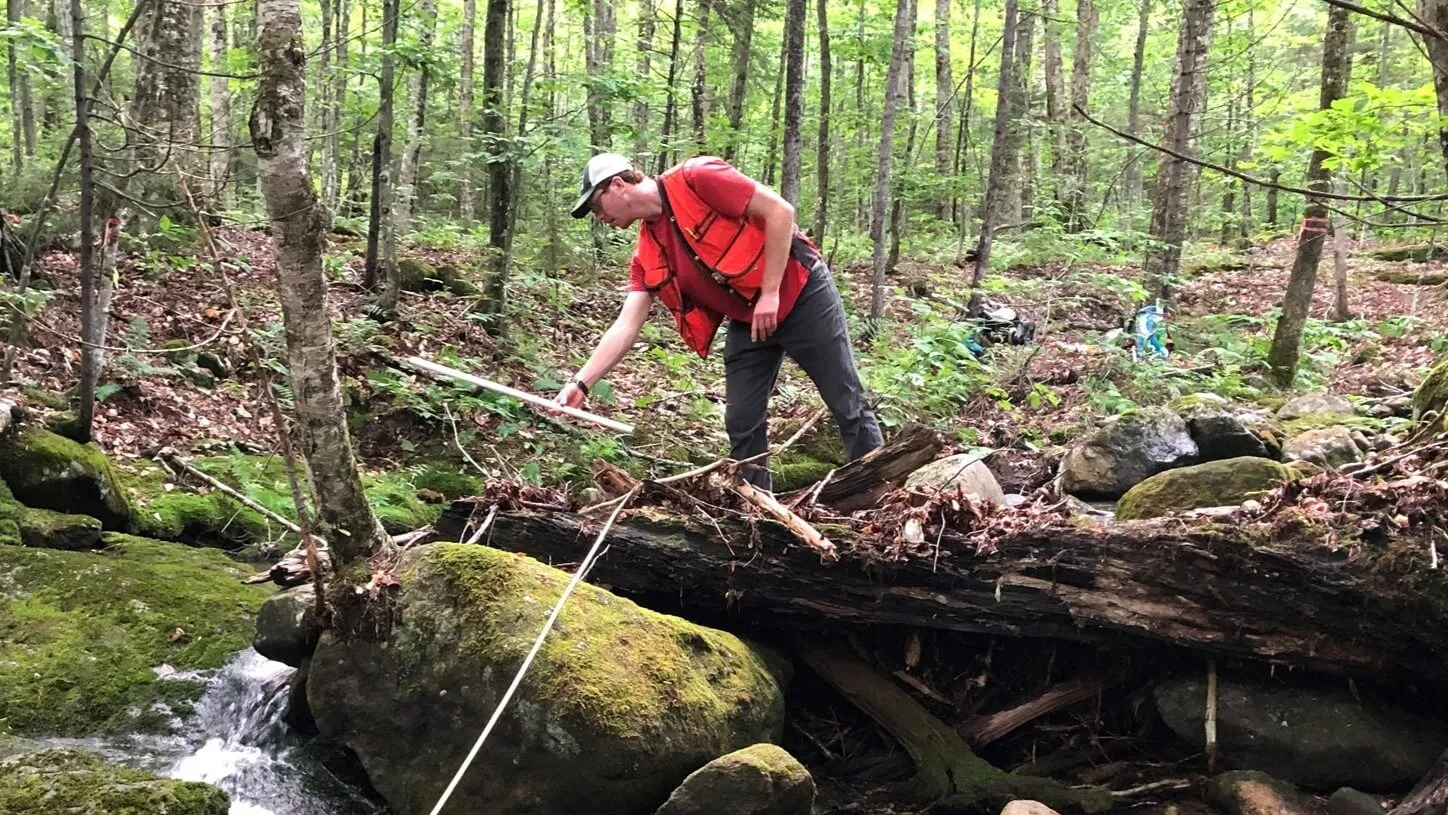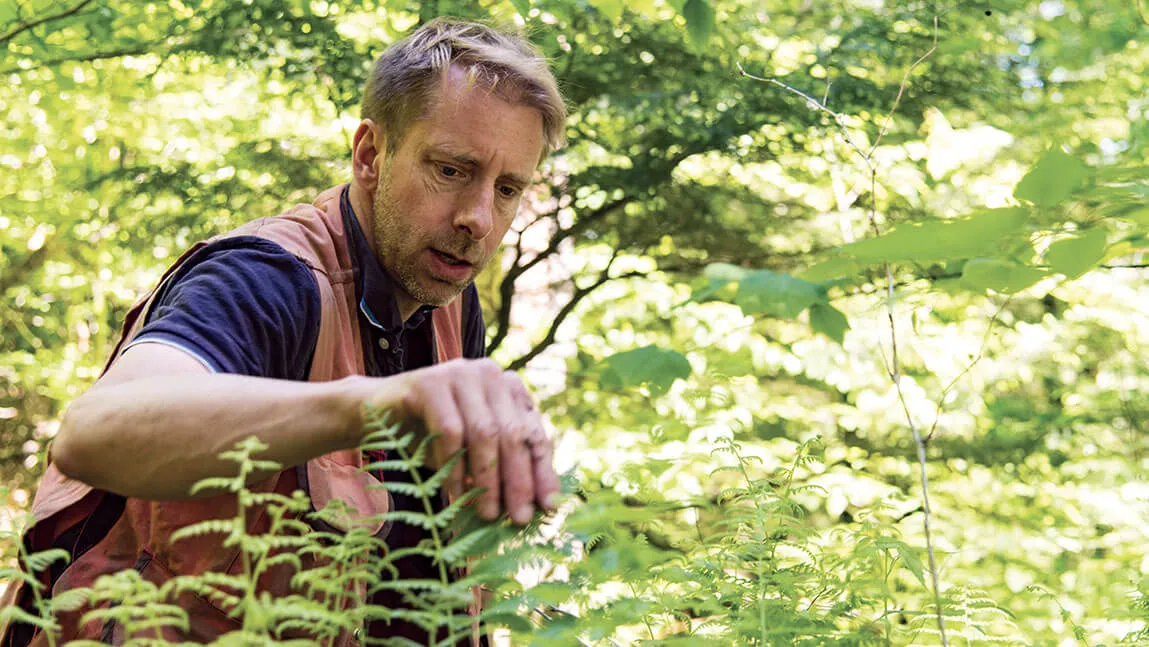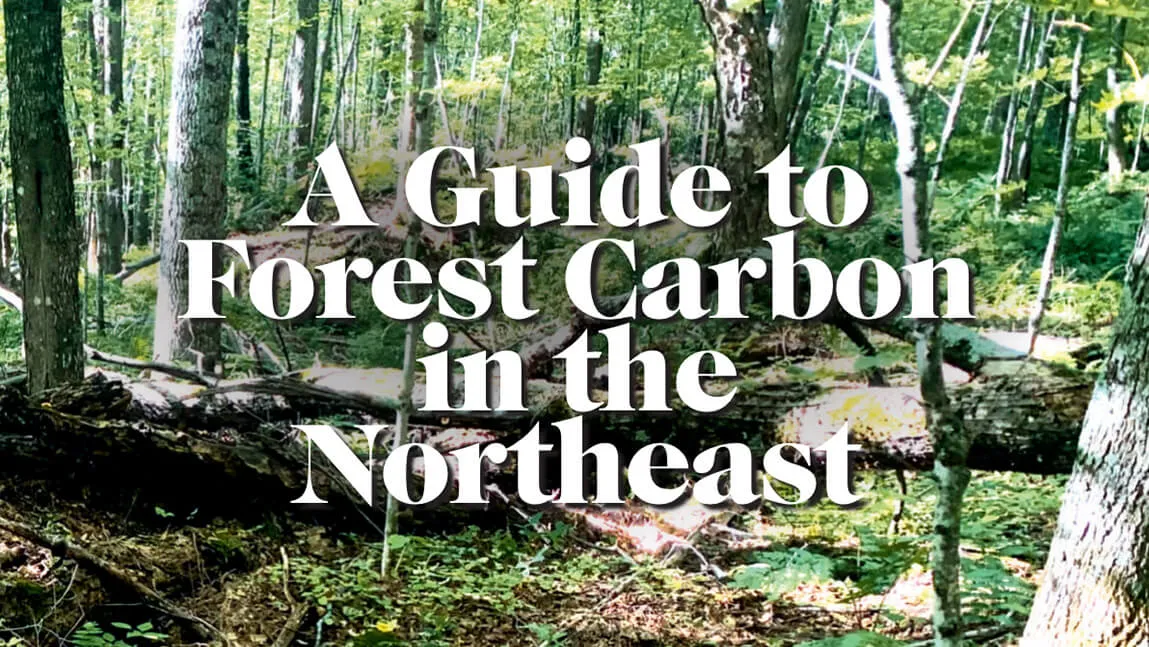Living trees absorb carbon, aiding climate change mitigation. But what role do dead trees play in carbon storage? UVM researchers found that large, downed trees in streams tie up tremendous stores of carbon—and this pool of carbon storage is growing over time. Moreover, large trees in streamside forests proved important for recruiting carbon into streams over time—reflecting the environmental value of big, old trees.
“We know that about 20% of global annual greenhouse gas emissions come from land use and deforestation,” University of Vermont professor and study author Dr. William Keeton said, “but we can also use forests and other land cover as what we call a natural climate solution—finding ways to sequester and store more carbon in vegetation.” Keeton had long suspected that water-bound wood in old-growth forests was surely storing carbon—but how much? Turns out, quite a lot.
“Old-growth forests stored four to five times more carbon in the wood lying in the streams than mature forests did,” said lead author and University of Vermont Rubenstein School of Environment and Natural Resources graduate student Stephen Peters-Collaer. “And in mature forests, this in-stream, dead-wood carbon pool is about 50 to 60% larger than that stored in downed wood in an area of equivalent size on the forest floor.”
He noted that although upland streams take up less space than land in forests, by focusing on large pieces of wood in streams, the study, published in the journal Ecosystems, found a key missing piece of the carbon-storage calculation in these ecosystems—one that hadn’t been measured before.
“One of the reasons that we were interested in this question is because there's been increasing realization in recent years that wood in streams, lakes and other aquatic systems stores carbon, but that carbon storage wasn’t well-quantified,” Peters-Collaer, a Gund Institute for Environment Graduate Fellow, said.
The field sites, which had established research histories that provided extensive context for their data, were Hubbard Brook Experimental Forest in New Hampshire, and old-growth forests in the Adirondack State Park of New York Keeton has studied for years.
Large fallen logs and branches can be significant carbon sinks, Keeton said, because their lower surface-area-to-volume ratio leaves less access for decomposing agents to break down the wood, especially when submerged, so they release stored carbon more slowly. Such logs can also fully span small upland streams, Keeton added, forming persistent dams, accumulating ever more wood and other organic materials, and compounding their carbon-banking effect.
While headwater streams are often relatively small and narrow, they account for 70% of total river miles—and their upland location leaves them typically undeveloped, Peters-Collaer said.
Taken together, these factors mean these carbon-hoarding soggy logs might be a significant carbon sink. Yet researchers had no idea how much carbon this stream-bound wood might be holding onto, or how it might vary between mature and old-growth forests, Peters-Collaer noted.
In part, Keeton muses, this is because “scientists will often study either the streams or the forest, but not both, or they won’t look at the relationships between them.” This is a relationship that is constantly changing, Keeton emphasized. “The connection between stream and forest is not static but dynamic. One of our major messages is that we must take a long view, and we must think of these as dynamic systems.”
Researchers, joined by UVM undergraduate field crews, spent three summers tramping a total of 4,500 meters of headwater streams at Hubbard Brook, carefully surveying the wood in streams, measuring their size to calculate the amount of carbon they held, and inventorying the surrounding streamside forests.
“We found that a forest that's developing toward old-growth condition is accruing more wood in the stream than is being lost through decomposition,” Peters-Collaer said. “As long as the wood recruitment rates exceed the loss rates, you have a net increase in total carbon stored. Large trees were especially important in this respect.”
The effect will continue in coming decades, Keeton said, because many mature New England forests are only about halfway through their long recovery from 19th- and 20th-century clearing for timber and agriculture. As mature forests like Hubbard Brook approach old age like the Adirondack forests the researchers examined, they’ll continue to suck up and accumulate stored carbon for many decades to come.
“We can expect the carbon pool stored in these forests to increase substantially,” Keeton said. “We’ve quantified a type of carbon storage that had been missing from previous global carbon models—an important part of understanding natural climate solutions.”
The work provides notable insight for Vermont landowners—80% of Vermont’s forested lands are privately owned—who may include carbon storage and natural climate solutions in their land-use plans. This is a valuable aspect of this USDA-funded research, said Keeton: serving Vermonters with valuable knowledge to guide sustainable land management.
“This is something that we’re very proud of—when our work has benefits for the community,” Keeton said. “That’s part of the University of Vermont’s land-grant mission.”
This story is an example of the work of the University of Vermont Planetary Health Initiative, which supports research and education related to the link between the health of human societies and the environment and fosters innovative approaches toward a healthier future for people and planet.


